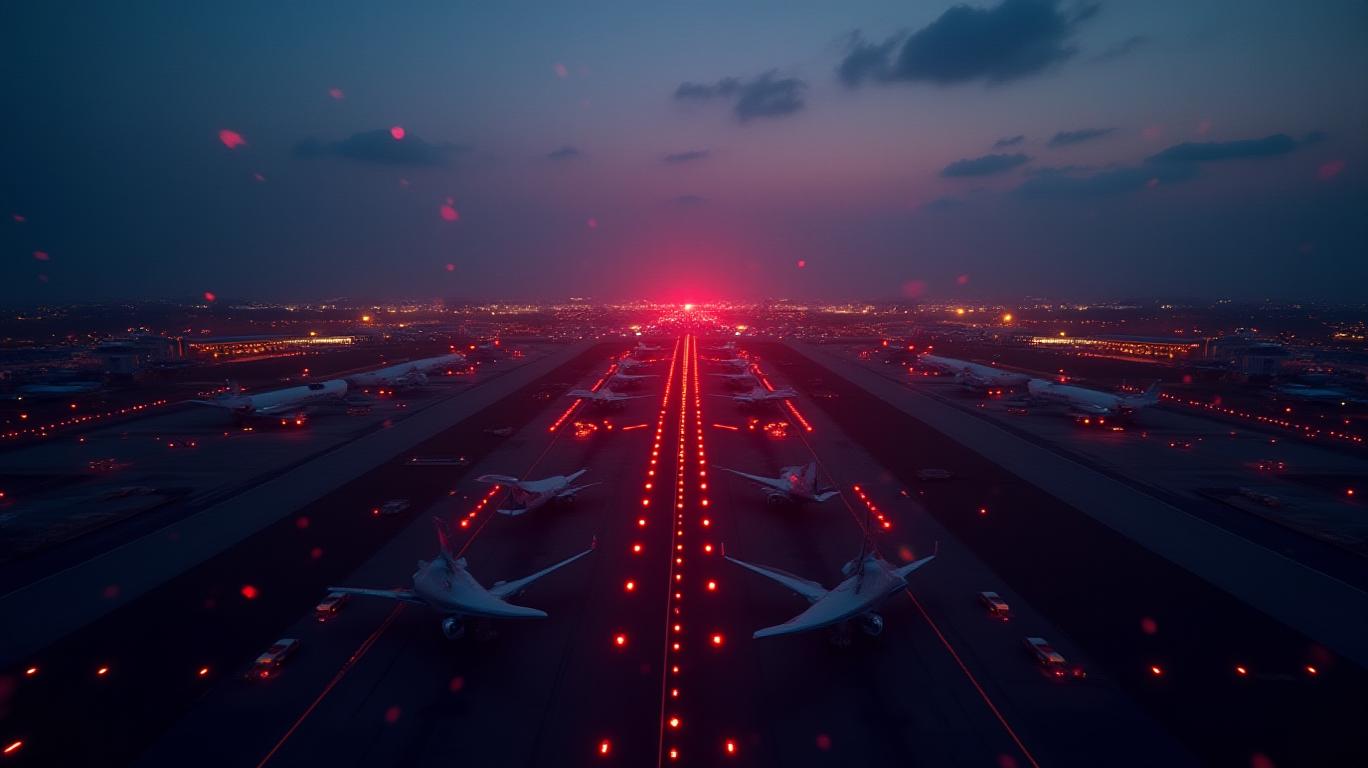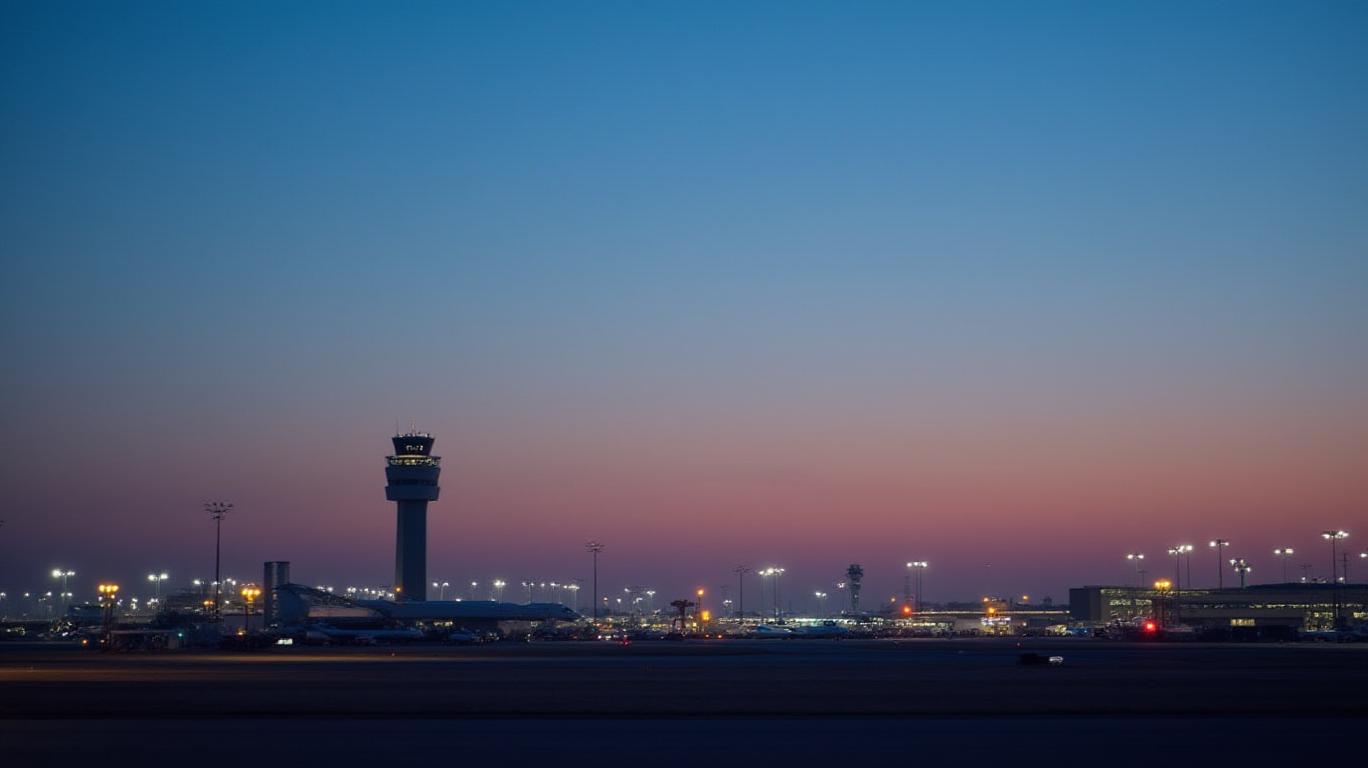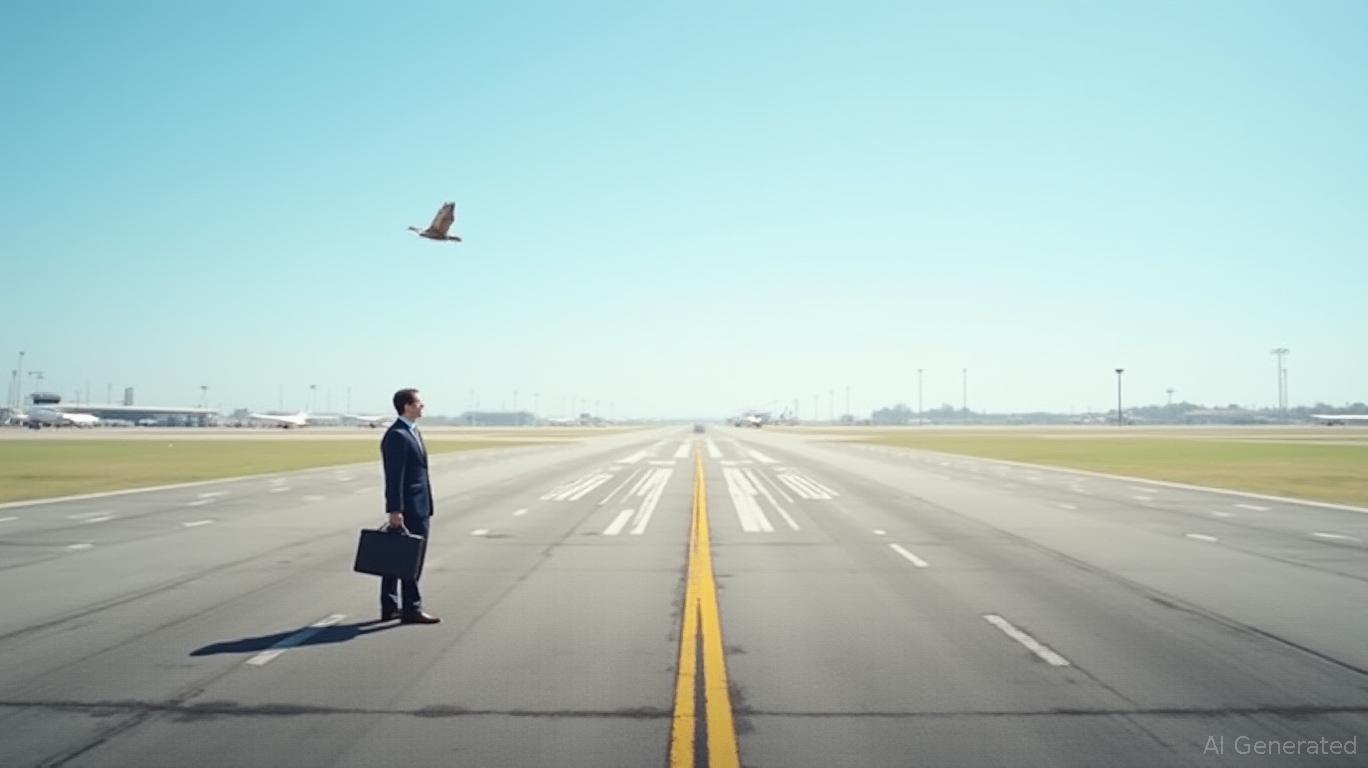Newark’s Airspace Crisis: A $8 Billion Inflection Point for Tech and Aerospace
The recent FAA outages at Newark Liberty International Airport—triggering cascading delays, controller burnout, and a 45-minute ground stop on May 11—have exposed a systemic rot in U.S. air traffic control infrastructure. What began as a localized crisis has now become a national wake-up call: the FAA’s reliance on 1970s-era radar, copper cables, and floppy disks is no longer a metaphor for dysfunction but a literal threat to aviation safety. This is not merely a problem to fix—it is a $8 billion market opportunity for firms positioned to supply fiber-optic networks, satellite communications, and automation systems. For investors, the time to act is now.
Ask Aime: "Are there opportunities in the FAA infrastructure overhaul?"

The Systemic Failure: Outdated Tech Meets Human Crisis
The Newark incident on April 28—where a copper telecommunications line failed, stranding aircraft and forcing five controllers into trauma leave—was not an anomaly. The FAA’s Philadelphia TRACON facility, managing Newark’s airspace, operates on 1990s-era computers, while its analog radar systems are a relic of the Cold War era. These vulnerabilities are not confined to Newark: the FAA’s 2024 report admits 51 of 138 systems are unsustainable, with 73% of infrastructure older than 20 years.
The human toll is equally stark. With staffing at 70% of required levels and controllers working 60-hour weeks, the system is collapsing under its own weight. United Airlines CEO Scott Kirby’s warning—“20% of Newark’s controllers were sidelined in a single outage”—underscores the fragility of legacy systems. This is not just a technical crisis; it is a capital allocation crisis demanding immediate intervention.
The Modernization Playbook: $8 Billion Over Five Years
The FAA’s 2028 modernization plan, funded by a $8 billion congressional mandate, targets three pillars:
1. Telecommunications Overhaul: Replacing 4,600 copper lines with fiber-optic networks (Verizon’s $2.4B contract) and wireless links.
2. Radar Replacement: Upgrading 618 aging radars to digital systems, with 377 critical units prioritized by 2027.
3. Satellite and Automation: Deploying Starlink’s space-based communications at 17 test sites and integrating AI-driven traffic management.
The urgency is clear: without this investment, the FAA risks more Newark-like meltdowns. For investors, the question is: who profits from this transformation?
Winners and Losers in the Modernization Surge
Winners: Infrastructure Tech Firms
- Verizon Communications (VZ): Already contracted to replace copper networks, Verizon stands to gain from the $2.4B fiber rollout. Its 2024 Q1 revenue rose 6% on enterprise infrastructure deals; the FAA’s plan could add 10% to its annual telecom division revenue.
- Starlink (SpaceX): Elon Musk’s satellite network is being tested in Alaska and Oklahoma—regions where ground infrastructure is sparse. With FAA approval pending, Starlink’s 2025 valuation could jump 25% if adopted widely.
- Cisco Systems (CSCO): Its networking hardware dominates FAA data centers. A would show a correlated rise as contracts flow.CSCO Trend
- Honeywell International (HON): Developing AI-driven surface traffic systems for airports, with 200 installations planned by 2028.
Losers: Airlines and Legacy Airport Operators
- Delta Air Lines (DAL) / American Airlines (AAL): Both face rising operational costs as FAA delays force ground stops and route cancellations. A reveals a 15% underperformance during outage spikes.DAL, AAL Closing Price, ASI(AA)
- Airports (e.g., JFK, SFO): Relying on outdated systems, their revenue streams are at risk. The FAA’s focus on modernization will penalize facilities slow to upgrade, pushing investors toward infrastructure plays instead of airport equities.
Why Act Now? The 2028 Deadline Is a Clock, Not a Timeline
The FAA’s three-year modernization window creates a “winner-takes-most” dynamic. Contracts for fiber, satellites, and radars will be awarded to firms with proven scale and speed. Delays are inevitable—Verizon’s progress has already drawn criticism—but first-movers in fiber and aerospace will dominate margins.
Investors should also note the bipartisan political consensus: the 2024 FAA Reauthorization Act and the Infrastructure Investment and Jobs Act (IIJA) have already allocated $15B for airports through 2026. This is a $23B market opportunity when combined with the $8B modernization fund.
The Investment Thesis: Go Long on Fiber, Short on Legacy Systems
- Buy: VZ, CSCO, HON, and satellite plays like Iridium (IRDM).
- Avoid: Airlines and airports until modernization is complete.
- Hedge: Use FAA modernization milestones—e.g., fiber rollout deadlines—to time entry points.
The Newark crisis is a rare convergence of risk and reward: systemic failure has created a clear path to profit. For investors, this is not a bet on the FAA’s competence—it is a bet on the inevitability of capital flowing to firms that can rebuild aviation’s nervous system. The clock is ticking. The stakes are airborne.
Act before the runway closes.


_442a2dcc1749832873286.jpeg)
_e68fac6d1749831664430.jpeg)






